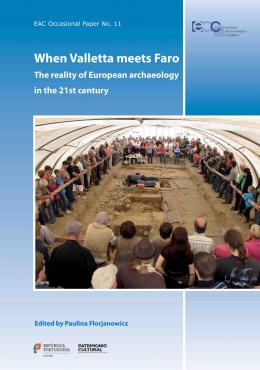When Valletta meets Faro. The reality of European archaeology in the 21st century

When Valletta meets Faro. The reality of European archaeology in the 21st century
| 9 226 Ft |
| Price |
European Archaeological Council Occasional Paper No. 11
Budapest, Archaeolingua, 2016
Keménykötés | Hardback
198 oldal, színes és fekete-fehér illusztrációkkal | 198 pages with colored and grayscale images
ISBN 978 963 9911 76 5
The digital version of the book is available in pdf on the EAC website.
Table of Contents // Tartalomjegyzék
Description
Over the past decades, European archaeology has focused on different ways of researching and protecting sites in areas intended for construction and other forms of land development. This type of archaeology, which has become the predominant model of this scientific discipline, has been given different names all over Europe: for example preventive, rescue, commercial, contract, development-led.
Whichever term we use to describe it – it is worth discussing. Therefore, the European Archaeological Council chose it as the theme for its annual symposium held in Lisbon in March 2015. With this event, the EAC completed a triptych of debates on the true effects of the Valletta Convention on European archaeology started in 2013 (EAC Occasional Paper no. 9) and followed in 2014 (EAC Occasional Paper no. 10).
The idea behind the Lisbon symposium was to integrate the approach of the Valletta Convention, which shaped preventive archaeology policies as we know them, with the concept of heritage communities contained in the Faro Convention, which determines the 21st century holistic and participatory approach to heritage governance.
The symposium comprised three sessions outlined by the EAC Board as a consequence of experience from the two previous conferences. Overall, the volume covers 21 contributions from archaeologists throughout Europe. The scope of issues tackled is quite broad, from pure legal analysis to emotions unleashed with archaeological discoveries related to the tragic history of Europe in the 20th century. Wide geographical representation is provided by authors from a range of countries extending from Portugal to Estonia.
| |
|
|
1067 Budapest, Teréz krt. 13. |
|
|
|
|
About us
The Archaeolingua Foundation and Publisher is involved in publishing series and standalone publications in the disciplines of archaeology, linguistics, historic sciences and heritage protection for over 25 years.
Learn more
Publishing
We publish both as standalone editions and as a volume of a professional series.
Learn more
Contact us
Archaeolingua Foundation

